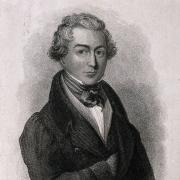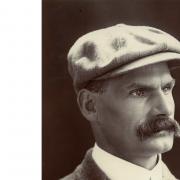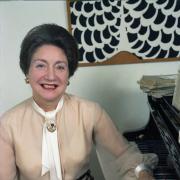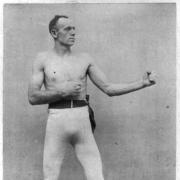Cornish-born astronomer and mathematician, John Couch Adams (1819-1892) is most famous for being associated with the discovery of the planet Neptune, but was it really he who predicted its existence?
John was born on a farm, Lidcot (or Lidcott), at Laneast, on the Tregeare Estate near Launceston, on June 5, 1819, the eldest of seven in a Wesleyan family. A son to Thomas Adams (1788-1859), a poor tenant farmer, and Tabitha née Grylls (1796-1866), no relation to Bear as far as I know, it was not the backstory for a stargazer to be.

John Adams is a famous name in history so it’s fortunate our Cornishman was given that middle name. It differentiates him from two American presidents, the second and sixth, and a ringleader of the mutiny on the Bounty. That middle name Couch (pronounced Cooch) came from Tabitha’s family. She was a farmer’s daughter but received some education from her uncle, John Couch, and inherited his small library which included astronomical works. There were the tomes that inspired the young John Couch Adams who attended Laneast village school, then aged 12 a private school in Devonport run by his mother’s cousin, the Rev. John Couch Grylls.
It sounds like the educational fare was largely of the Classics persuasion, so John’s mathematical expertise was mostly self-taught. In 1835 he observed Halley’s Comet from Landulph, where he attended another school and suitably motivated, was making his own astronomical calculations and observations from the following year when he was only around 16 or 17.

In the same year (1836) his mother received another, more substantial inheritance, a small estate at Badharlick, and recognising John’s mathematical promise, dispatched him to Cambridge in 1839. As early as July 3, 1841, Adams recorded in his journal his supposition that there was: ‘an undiscovered planet beyond it (Uranus)’.
John graduated as B.A. and as senior wrangler at St John’s, Cambridge in 1843, becoming a fellow and tutor of mathematics. Senior wrangler might sound like a vexatious whinger, a complainant of cantankerous disposition, but it’s not that at all. The person achieving this was the top mathematics undergraduate at the University of Cambridge. Becoming senior wrangler places Adams in exalted company; Jacob Bronowski, John Herschel and George Airy to name but three.
Soon after taking his degree, he decided to research the cause of irregularities in the motion of Uranus. There were two eminent bods unbeknownst to one other with the same train of thought. Urbain Le Verrier’s paper of June 1, 1846, suggested an unnamed planet in almost the same place in the heavens as Adams had done in the paper he’d left with the Director of Cambridge Observatory, James Challis, and Astronomer Royal, George Airy, in October 1845.

It seems due to inertia on the part of Challis and/or Airy, Adams’ primacy for what should have been his discovery was lost, then disputed, and later established. It was, however, the existence of this new planet that was responsible for those irregularities. Johann Galle used Le Verrier’s results to observe Neptune from Berlin on September 23, 1846. As Galle had acted with exemplary speed, unlike his British counterparts, the glory of being Neptune’s discoverer descended on Adams’ rival, Le Verrier.
The Royal Society, however, was to award equal honours, the Copley Medal, to both theorists, Adams and Le Verrier, by 1848. In recognition of his contribution to this advancement in our knowledge Adams was elected a Fellow of the Royal Society in 1849. He’d also become President of the Royal Astronomical Society in 1851 (until 1853), the first of two stints as he also served as President between 1874-76.
In 1858 Adams became Lowndean Professor of Astronomy at Cambridge, a position he held until his death. He married in 1863 to Dubliner Eliza Bruce (1827-1919) who would outlive her older husband. The couple didn’t have any children. John also did important research into the secular acceleration of the Moon’s mean motion, as well as the meteors seen in November, showing in 1866 that the Leonid meteor shower had an orbit closely resembling that of a comet. In the same year (1866) Adams was awarded the Gold Medal of the Royal Astronomical Society. He wasn’t the only astronomer in the family either. His younger brother William Grylls Adams (1836-1915) became a Professor of Natural Philosophy, physicist, and astronomer.

Adams was offered the post of Astronomer Royal in 1881 but declined, preferring to maintain his interest in research and teaching. It may not have been the first time he declined a prestigious position or honour; it’s said he declined a knighthood in 1847 possibly because of his innate modesty. That modesty saw him acquiesce in the glory going to Le Verrier the year before, but posterity has seen a shifting of astronomy’s tectonic plates with many experts now acknowledging our man Adams as the first and true discoverer of Neptune.
John Couch Adams died on January 21,1892 aged 72 having suffered with a lengthy illness. His wealth was in the region of £2.6 million in today’s money, not bad for the son of a poor tenant farmer from Cornwall.
Sir H.S. Jones’ book John Couch Adams and the Discovery of Neptune (1907) sets out Adams’ role in this pioneering work. Adams has a crater on the moon jointly named after him whilst the Adams Prize is presented by Cambridge University in commemoration of his prediction of Neptune’s position. He also has a nunatak (a protruding ridge) named after him in an Antarctician glacier and has memorials in Westminster Abbey (in the North Choir Aisle close to Newton’s grave and Darwin’s memorial) and Truro Cathedral.
The Cornish-born journo, newspaper proprietor, MP and philanthropist John Passmore Edwards (1823-1911) also established a public institute in Launceston in John Adams’ honour. Finally, there’s a memorial in the little church at Laneast, the place where Adams was born. As well as lauding him as ‘the greatest English astronomer since the time of Newton’ it also records his steady modus operandi: ‘Tracing his way by the sure clue of mathematics, through the soundless night of space, he found the uttermost of the planets.’ (this became true again when Pluto was downgraded to a minor planet in 2006). Also, according to the same memorial, he was ‘pursuing the paths of the sciences with single-hearted modesty and clearness of intellect’.

Chronology
1819 – John Couch Adams born in Laneast, near Launceston (June 5).
1835 – Adams observes Halley’s Comet from Llandulph.
1839 – Adams heads to St John’s, Cambridge, graduating in 1843.
1841 – Records in his journal his belief that there is an undiscovered planet.
1845 – Deposits a paper with the Astronomer Royal declaring the existence of Neptune.
1846 – Johann Galle is the first to observe the new planet from Berlin.
1849 – Elected a Fellow of the Royal Society.
1858 – Becomes Lowndean Professor of Astronomy at Cambridge (until his death).
1863 – Marries the Dubliner Eliza Bruce.
1892 – Death of John Couch Adams in Cambridge (January 21) aged 72.



























